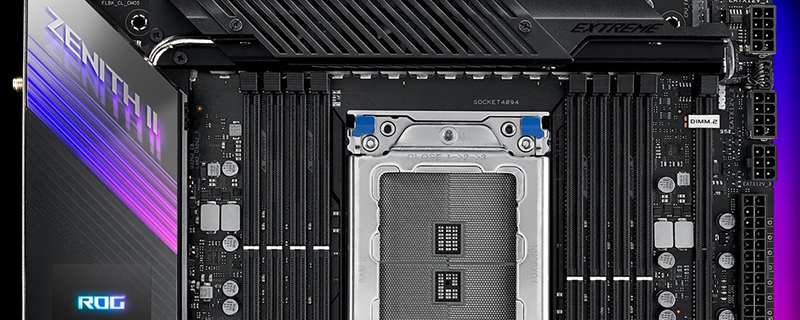ASUS ROG Zenith II Extreme Review
Conclusion
Our time with the TR 3960X and TRX40 chipset has been tremendously exciting. Whilst we have a professional capacity to this, we are enthusiasts first and foremost and getting the opportunity to play with quite so many cores and threads has been a delight. It’s very difficult to get back to CPUs with 12 cores when you’ve had 24. Rendering videos in 16 minutes instead of 10. Normally performance is a fairly nebulous thing, you press go and wait patiently for the task to finish without any obvious visual representation of the hardware beating away. With Cinebench you get the ultimate expression of the speed and power available from the Threadripper at the touch of a button. If you’re ever bored watch a Youtube video of a high end, high core system performing the benchmark and compare it to your own. Suddenly the price tag of the TR 3960X and Zenith II pairing doesn’t seem so eye-watering.
Obviously you have to have a special set of skills and requirements to justify the outlay necessary to run the 3rd Gen Threadrippers at their best, but if you have the need to create on a regular basis then there really isn’t a replacement for two dozen cores. Unless you count the TR 3970X, but we haven’t been sent one of those to test.
The original Zenith was a good looking board that still kept true to the ROG philosophy, and the Zenith II Extreme does, but perhaps the other manufacturers have caught up, or ASUS have slightly rested upon their laurels, as it doesn’t quite wow us in the same way that older ROG products used to. It seems like a ridiculous thing to complain about given how amazing things like the Rampage are, but ROG products have a certain expectation attached to that famous name and, apart from the full-colour LiveDash OLED display, the Zenith II Extreme is fairly ho-hum. Not damning with faint praise but praising with faint damns. Given that the main changes from the original Zenith to the Zenith II is just the introduction of a new socket and chipset and the upgrade from 60A to 70A VRMs it isn’t a shock that the Zenith II looks like its predecessor. Perhaps our expectations were too high.
Thankfully that other element that has made the Republic of Gamers brand so famous, performance, is here in abundance. It overclocks like a lunatic and has the results to back up the results of your efforts. We say effort, but ASUS motherboards are legendary for the ease of overclocking both when it comes to hardware and their UEFI and the Zenith II Extreme is no exception. Everything is where you expect to find it, does what you hope it does, and if you’ve any experience at all with an ASUS BIOS you’ll be right and home. That’s a serious positive when you’ve got such a premium processor relying upon you not accidentally releasing all the magic smoke with a careless voltage adjustment.
The ASUS ROG Zenith II Extreme is probably the most obvious choice of the three we’ve had on test today. If you’ve been out of the loop for a while you wont believe how good the Gigabyte Aorus range is, and the new design and name of the MSI might put off some cautious types, so plumping for a ROG motherboard is a popular option and you wont be disappointed in performance terms. Sure we can quibble slightly that the design is a safe option, but it works and it would be churlish to bemoan ASUS for sticking with a successful formula.
Discuss the ASUS ROG Zenith II Extreme in our OC3D Forums.




